Photographic manipulation has always played a large part in John Massey’s work, and his new exhibition at the Diaz Contemporary is no exception to this rule. Black on White is a mesmerizing display of artistic prowess that both engages and disarms the viewer through its use of allegory. The exhibition is composed of a series of ten digital prints that have been combined with a collage technique to create dense visual fields of linguistic characters. However, this emphasis on language does not produce static imagery; instead we are presented with a series of explosively dramatic prints that seem to emphasize the intensity and fervor that characterize our modern surroundings.
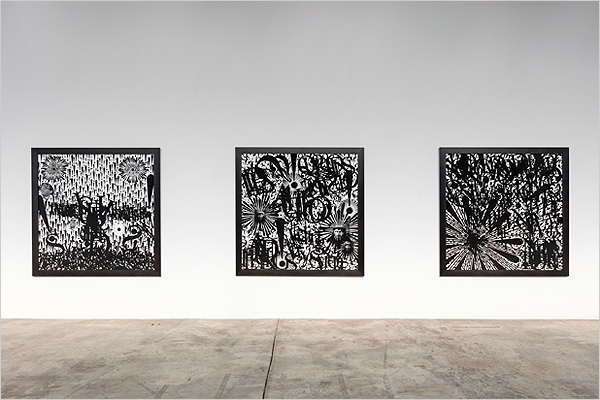 Installation view of John Massey, Black on White (from left to right) One, Auto and Now, 2016 Courtesy of Diaz Contemporary
Installation view of John Massey, Black on White (from left to right) One, Auto and Now, 2016 Courtesy of Diaz Contemporary
This can be seen immediately after one walks through the doors of the gallery, as each of the first three prints – One, Auto and Now – all contain explosive motifs constructed from a series of exclamation points, which all radiate from a central node. In One, these are also combined with a series of exclamation points that cascade downwards like raindrops. In the book that accompanies this exhibition, Massey describes One as such: “As it rains exclamation points, the promise of fertility and Jerry Lewis’s secret potion hovers over a cruciform jumble of letters and words.” Each of these cryptic decisions implies a strong sense of tension that hints at our inability to understand a now that we have been violently thrust into.
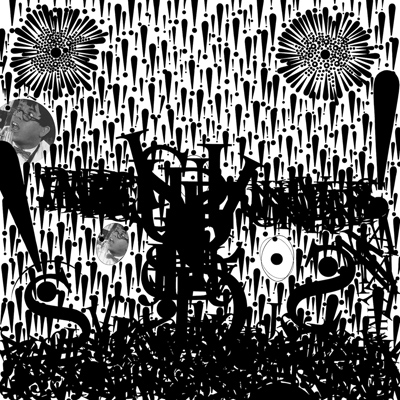 John Massey, One, 2012-14, archival digital print mounted on dibond, 65” x 65”, edition of 3. Courtesy of Diaz Contemporary
John Massey, One, 2012-14, archival digital print mounted on dibond, 65” x 65”, edition of 3. Courtesy of Diaz Contemporary
In Cross we are presented with a tragic series of images, phrases and words that seem to represent a love that has been lost. These are the only full phrases that appear in the entire exhibition and so their force is felt twofold; phrases like “I know I don’t love you anymore” and “Listen, I have to talk to you”, take on a new level of seriousness and candor. The word “take” is also repeated a numerous amount of times, thus suggesting the toll that relationships can take on an individual.
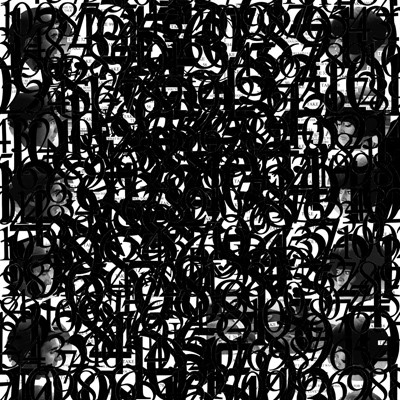 John Massey, Cross, 2015, archival digital print mounted on dibond, 32.625” x 32.625”, unlimited edition. Courtesy of Diaz Contemporary
John Massey, Cross, 2015, archival digital print mounted on dibond, 32.625” x 32.625”, unlimited edition. Courtesy of Diaz Contemporary
In Tarot, the base print is made up of a series of colorful tarot cards, which have been obscured and concealed by a thick layer of letters. The colors contained within this piece make it stand out from the others, which are much more faithful to the title of the exhibition. Nevertheless, it is again the letters that contain the most significance; in this piece, the letters serve to construe any sort of meaning that we would be able to draw form the cards themselves. Therefore, some of these prints serve to show how language and expression can in fact obscure, rather than simply convey information. While observing these prints, the viewer longs to understand a truth that seems to be ultimately ungraspable.
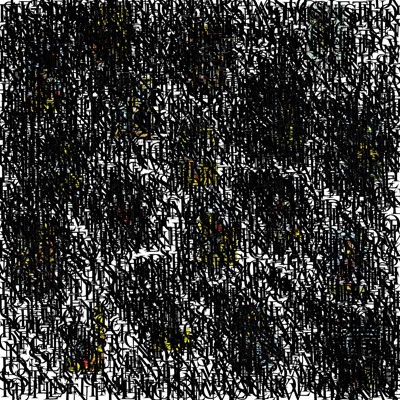 John Massey, Tarot, 2016, archival digital print mounted on dibond, 65” x 65”, edition of 3. Courtesy of Diaz Contemporary
John Massey, Tarot, 2016, archival digital print mounted on dibond, 65” x 65”, edition of 3. Courtesy of Diaz Contemporary
This sense of longing is in fact present throughout the exhibition; we as viewers are driven by a desire to understand these prints fully while the artist, through a series of references to the past, seems to be longing for something that has been lost, or that has yet to present itself. In Black on White, and in Phantoms of the Modern, we are presented with an aching desire for understanding, which is then underlined by our inability to really see what we are being presented with. In his book on the exhibition, Massey describes one of the prints with the phrase: “The explosion of the now is an inescapable cacophony.” In a way, this statement could be used to describe the entire exhibition; the chaotic, and sometimes hypnotic nature of these prints draws us in and locks us into a constant battle for understanding, from which escape can be difficult.
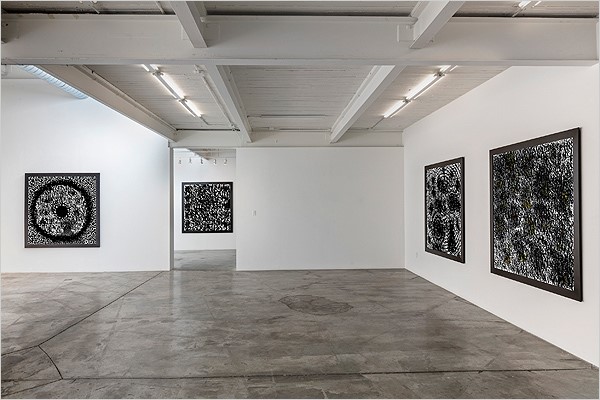 Installation view of John Massey, Black on White, 2016. Courtesy of Diaz Contemporary
Installation view of John Massey, Black on White, 2016. Courtesy of Diaz Contemporary
Jordan Fee
*Exhibition information: October 14 – November 12, 2016, Diaz Contemporary, 100 Niagara Street, Toronto. Gallery hours: Tue- Sat 11 am – 6 pm.
